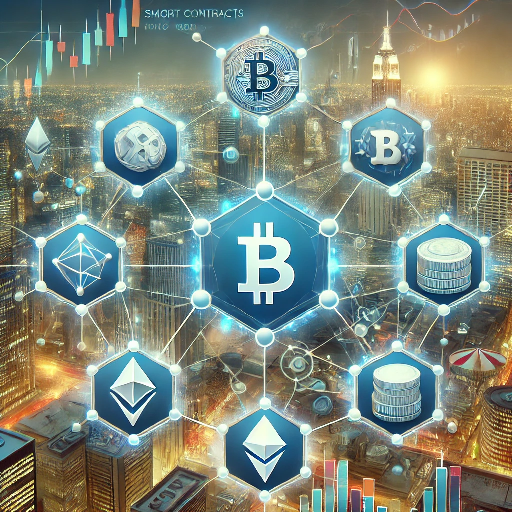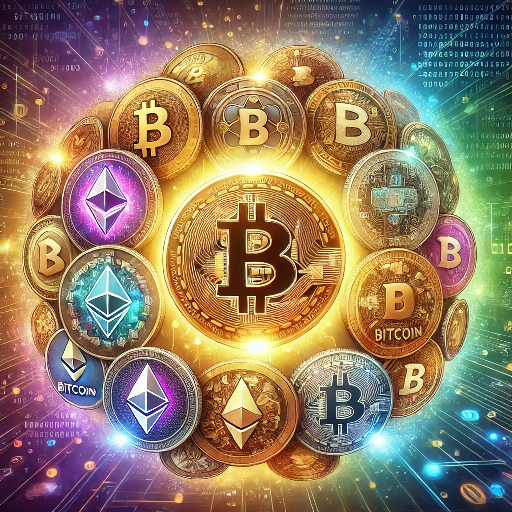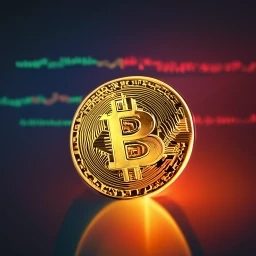Introduction
Synthetic Assets and Derivative Tokens are transforming the financial landscape, offering investors innovative opportunities to gain exposure to traditional assets in decentralized markets. These financial instruments enable users to interact with price movements of real-world assets without directly holding them, thereby unlocking immense potential in the digital economy.
Understanding Synthetic Assets
Synthetic Assets are blockchain-based representations of real-world assets, including stocks, commodities, currencies, and other financial instruments. Unlike traditional assets, they are created and traded on decentralized platforms, leveraging smart contracts and oracles to track asset prices. This mechanism allows users to gain exposure to various financial markets without requiring ownership of the underlying assets.
The fundamental principle behind these assets lies in tokenization. By minting blockchain-based versions of real-world financial instruments, they provide users with enhanced accessibility, liquidity, and diversification. This approach significantly reduces entry barriers for retail investors and fosters a more inclusive financial ecosystem.
The Role of Derivative Tokens in Synthetic Asset Markets
Derivative Tokens play a crucial role in the functioning of Synthetic Assets. These tokens derive their value from underlying asset prices and are used in various financial instruments such as futures, options, and perpetual contracts. The combination of Synthetic Assets and Derivative Tokens enables sophisticated trading strategies within decentralized finance (DeFi), expanding opportunities for investors worldwide.
Unlike traditional derivatives, which are heavily regulated and require intermediaries, blockchain-based derivatives operate in a trustless environment. Smart contracts automate execution, settlement, and collateralization, reducing counterparty risks and enhancing efficiency.
Advantages of Synthetic Assets
The introduction of Synthetic Assets brings several advantages to the financial ecosystem:
1. Accessibility to Global Markets
Synthetic Assets enable users to access global financial markets without geographical limitations. Investors from any part of the world can gain exposure to stocks, commodities, and foreign exchange markets without dealing with regulatory restrictions or intermediaries.
2. Enhanced Liquidity
By tokenizing real-world assets, liquidity is significantly improved. Traditional assets often require complex settlement procedures and intermediaries, causing delays in trading. Synthetic Assets facilitate instant settlements, reducing inefficiencies and enhancing trading speed.
3. Lower Transaction Costs
Traditional financial markets involve multiple intermediaries, leading to high transaction costs. The decentralized nature of Synthetic Assets eliminates middlemen, reducing fees associated with buying, selling, and holding assets.
4. Risk Management and Hedging
Derivative Tokens provide advanced risk management tools for traders and investors. By using synthetic derivatives, market participants can hedge against price volatility, protecting their portfolios from unforeseen market fluctuations.
5. Composability in DeFi Ecosystems
Synthetic Assets are fully compatible with various DeFi protocols, allowing seamless integration with lending, borrowing, and yield farming platforms. This composability fosters innovation and expands use cases within the decentralized financial ecosystem.
Use Cases of Synthetic Assets
The applications of Synthetic Assets span across multiple industries and financial sectors, making them a valuable tool in modern digital finance.
1. Decentralized Trading Platforms
Decentralized trading platforms such as Synthetix, Mirror Protocol, and UMA facilitate the creation and trading of Synthetic Assets. These platforms enable users to trade tokenized stocks, commodities, and foreign exchange pairs without traditional brokerage accounts.
2. Stablecoins and Currency Pegging
Stablecoins represent one of the most widely adopted use cases of Synthetic Assets. Algorithmic stablecoins, such as DAI, rely on synthetic mechanisms to maintain price stability, enabling seamless transactions and store-of-value functions.
3. Commodities and Precious Metals Trading
Investors seeking exposure to commodities like gold, silver, and oil can trade synthetic versions of these assets. This approach eliminates storage and transportation costs while maintaining exposure to market price fluctuations.
4. Synthetic Indices and ETFs
By leveraging Synthetic Assets, decentralized finance platforms can create synthetic index funds and ETFs, allowing investors to diversify their portfolios efficiently. These financial instruments track multiple assets, providing diversified exposure without the need to hold each individual component.
5. Tokenized Real Estate and Investment Funds
Tokenized real estate assets enable fractional ownership, making property investments more accessible. Similarly, decentralized investment funds leverage Synthetic Assets to provide transparent and efficient portfolio management.
Challenges and Risks of Synthetic Assets
Despite their advantages, Synthetic Assets come with certain risks and challenges that must be addressed for mainstream adoption.
1. Price Oracles and Data Reliability of Synthetic Assets
The accuracy of Synthetic Asset pricing depends on decentralized oracles, which fetch real-world price data. Manipulation or failures in oracle mechanisms can lead to discrepancies in asset valuation, affecting market stability.
2. Regulatory Uncertainty of Synthetic Assets
Many jurisdictions have yet to establish clear regulations for Synthetic Assets and Derivative Tokens. The lack of regulatory clarity poses risks for investors and platforms, potentially leading to compliance issues in the future.
3. Smart Contract Vulnerabilities
Like all DeFi applications, Synthetic Assets rely on smart contracts, which are susceptible to bugs and exploits. Security vulnerabilities in smart contracts can result in financial losses for users and platform providers.
4. Market Liquidity and Volatility
Although Synthetic Assets enhance liquidity, extreme market conditions can lead to price instability. The decentralized nature of these markets means that traders must be cautious about slippage and price deviations.
The Future of Synthetic Assets and Derivative Tokens
The growing adoption of blockchain technology and decentralized finance suggests a promising future for Synthetic Assets and Derivative Tokens. As the industry evolves, several trends are expected to shape the next phase of innovation:
- Institutional Adoption: More institutional investors are likely to explore Synthetic Assets as they provide regulated exposure to digital finance without requiring direct cryptocurrency ownership.
- Interoperability Improvements: Cross-chain compatibility will enable Synthetic Assets to function seamlessly across multiple blockchain networks, enhancing accessibility and efficiency.
- Regulatory Frameworks: Governments and regulatory bodies will work towards establishing clearer guidelines to support the safe and responsible use of Synthetic Assets in financial markets.
- AI-Driven Trading Strategies: The integration of artificial intelligence (AI) and machine learning will enhance automated trading strategies for Synthetic Assets, improving efficiency and profitability.
Conclusion of Synthetic Assets
Synthetic Assets and Derivative Tokens represent a groundbreaking evolution in digital finance, offering unprecedented opportunities for investors and traders worldwide. By providing access to global markets, reducing transaction costs, and enabling advanced risk management strategies, these assets are revolutionizing the financial industry. However, challenges such as regulatory uncertainty, smart contract security, and market volatility must be carefully managed to ensure sustainable growth.
As decentralized finance continues to mature, the role of Synthetic Assets in reshaping the traditional financial landscape will only expand. With ongoing advancements in blockchain technology, security, and regulatory compliance, these innovative financial instruments are poised to play a pivotal role in the future of global finance.

















